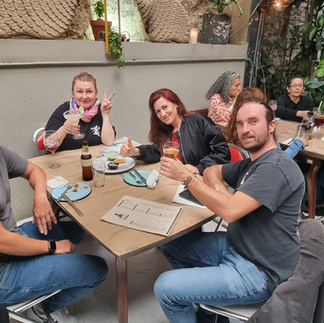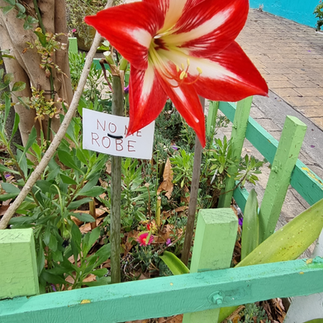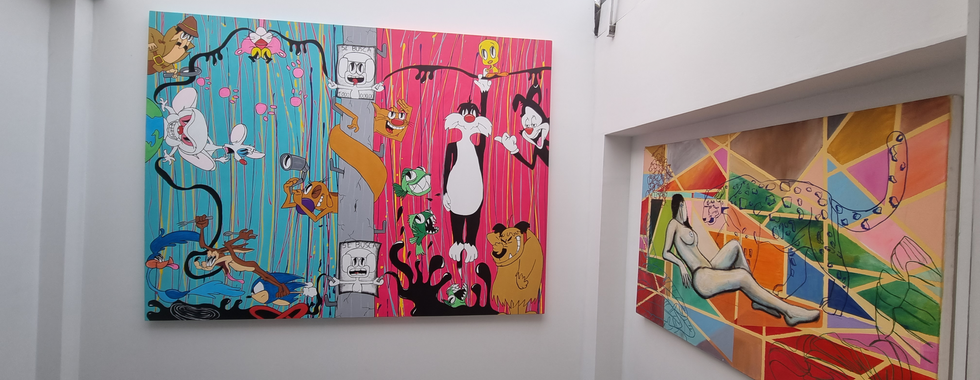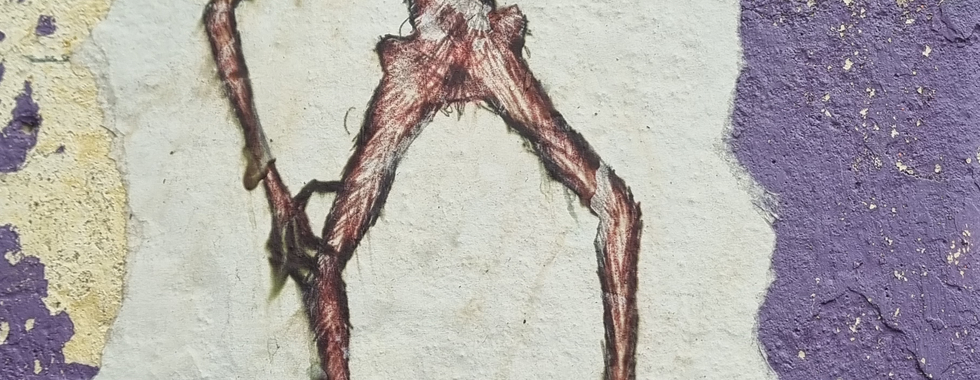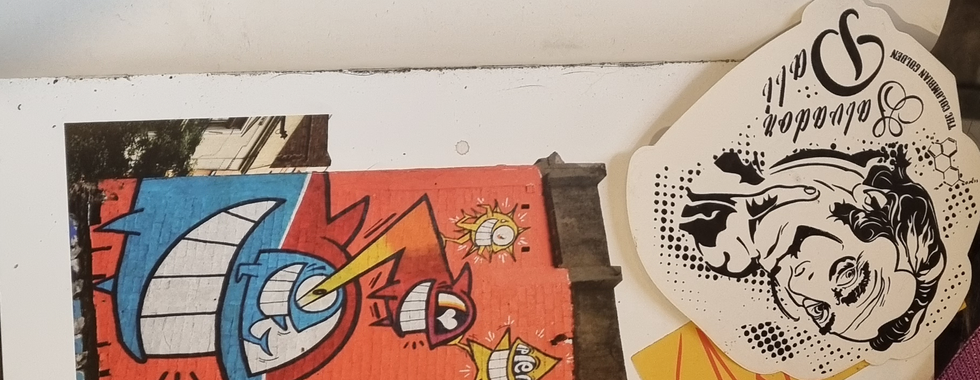Exploring Urban Practices in Bogota: Street Art & Galleries
- Anna Stolyarova

- Feb 22, 2024
- 6 min read
Updated: Feb 26, 2024
In 2023, the Street Art Museum Amsterdam (SAMA) initiated a compelling exploration enabled by a grant from Fonds van CultuurParticipatie, aimed at fostering creativity and cultural exchange. Our objective was to establish connections, exchange insights and lay the groundwork for sustainable collaborations, whilst immersing ourselves in the multifaceted Street Art scene of Bogota. What transpired was an engaging expedition, interweaving the diverse stories of Amsterdam and Bogota to articulate a narrative of collaboration, innovation and community empowerment. Through this undertaking, we sought to unveil the allure, impact and limitless potential of Street Art in shaping urban culture on a global scale.

This journey transcended mere visitation; it epitomised an odyssey. From introductory sessions elucidating each other's creative methodologies and organisational ethos to in-depth research sessions instigating the conception of future projects, every interaction resonated with potentiality.
Today, the incorporation of Street Art into traditional gallery spaces and the classification of artworks by street artists exhibited or sold within galleries as genuine Street Art raises nuanced questions. To address these inquiries comprehensively, we engaged with three establishments specializing in Urban Art, representing both local and international street artists.
Vertigo Graffiti stands as a diverse artistic collective, hailing from various disciplines, and has been shaping urban landscapes since 2009. Their portfolio boasts a range of urban development projects, large-scale murals and consultancies aimed at analysing, understanding and leveraging public art and graffiti. During our encounter with founder Camilo Fidel Lopez, we delved into his recent venture—a captivating book chronicling his journey from lawyer to street art producer.
Presently, Vertigo Graffiti proudly showcases a new gallery nestled in the trendy & upcoming neighbourhood of San Felipe, where they launched and exhibition of 11 artists which closed in December and had more than 600 visitors. Alongside this, they engage in national and international consultancy, collaborating with interdisciplinary teams comprising cultural managers, visual artists, storytellers, audiovisual producers and photographers. Their approach involves a structured process divided into three phases, adaptable to the unique nuances of each project and environment.

These phases can also be undertaken individually:
Design: This phase involves immersing in the challenge presented by the social, creative, or artistic intervention. Through meticulous study and understanding, Vertigo Graffiti crafts alternative solutions and execution suggestions.
Execution: Once the groundwork is laid, Vertigo Graffiti puts the plan into action, implementing all devised alternatives and suggestions according to a predefined work plan and schedule.
Content Creation: Finally, Vertigo Graffiti captures the essence of the project through audiovisual and photographic mediums tailored for social networks and other platforms. These pieces encapsulate the project's experience, showcasing the journey and collecting participant testimonies along the way.
With Vertigo Graffiti's structured approach and commitment to creativity, each project becomes a unique narrative woven into the fabric of urban culture, leaving an indelible mark on communities worldwide. This year, Camilo is releasing his first book on the subject titled "Veritgo Graffiti - Memories, Mechanics & Gestiones":
As part of the subtitle of this book reveals, Vertigo Graffiti’s work in recent years can be explained through a series of creative mechanics that include basic elements such as observation, attentive listening and, above all, insistence on the discovery of the image. This discovery is the result of the essential evaluation of two tools, prior to painting a mural or creating a graphic, whatever it may be: the analysis of the context and the determination of the stories (those that have happened and those that are desired). These are exercises of thought and reflection that, in our case, being a collective, included an inevitable -and often exhausting- phase of discussion. Of course, I do not seek to propose a magic formula of creation that looks like a resource or a pile of data for some kind of artificial intelligence. Rather, it assumes a more or less certain procedure that might - or might not - result in a lasting creation in the public space. The important thing -and sometimes the only thing- is not to give up on the finding. That finding that -with good fortune- translates into an image on a wall that will remain -for months or years- in the public space, altering the paths of passers-by now turned into spectators.
Amidst the warm glow of a sunny afternoon, Pez graciously introduced SAMA to Juan Carlos Moreno, the visionary founder of a prestigious high-end urban and contemporary art gallery.

Juan Carlos, a trailblazer in his own right, played a pivotal role in shaping the cultural landscape of the once-hidden gem, San Felipe neighbourhood, by championing street art and fostering its evolution into a vibrant creative district.
Juan Carlos's unwavering commitment to bridging the gap between artists and audiences shines through in the meticulously curated exhibitions held within his expansive gallery space. These events, often bustling with enthusiastic attendees, offer not only a visual feast of artistic expression but also provide a serene sanctuary in the form of a charming garden where visitors can engage in meaningful dialogue and reflection.
Artistry flows through the veins of the Moreno family, with Juan Carlos's father leading a frame-making workshop and his brothers overseeing galleries specialising in contemporary art. However, Juan Carlos's true passion lies in urban art, encompassing the dynamic realms of street art and graffiti. His deep-rooted friendship with Pez, a luminary within the global street art community, has not only enriched their creative endeavours but also paved the way for new horizons and opportunities for all involved.
With Juan Carlos at the helm, the gallery stands as a dynamic hub where art, culture, and community converge. It serves as a beacon of inspiration, sparking dialogue, and kindling passion for urban artistry amongst visitors from all walks of life. Specialising in Pop Art, Urban Art, Kinetic Art, Figurative Art and Graffiti, his gallery is committed to offering the finest artworks available in the market. Each piece is a unique expression, reflecting the creativity and originality of its creator. If you're seeking a statement piece to adorn your home or workspace, look no further - the artworks transcend mere decoration; they carry messages and narratives that provoke thought and inspire new perspectives on the world.
As we journeyed towards the bustling tourist hub of La Candelaria, a hidden gem awaited our discovery: the first VisajeGrafiti - aworkshop and exhibition space - nestled in the Santa Teresita neighbourhood. Tucked away amidst residential streets, this unassuming space resembles an old-school squat, exuding an aura of authenticity and artistic fervour. Accessible by appointment or as part of a street art bike tour, it offers a unique glimpse into Bogota's urban art culture.
Upon stepping inside, SAMA was warmly welcomed by Laduende and Senil, the dynamic husband-and-wife duo behind VisajeGrafiti. While Senil imparted a workshop on stencil spraying during 5 minutes of which we produced 2 artworks, Paola (aka Laduende) showed-off her funky Halloween costume, a tradition cherished deeply in Bogota, and regaled us with tales of their journey through urban culture. Both artists, still devoted to their craft of stencil art, have expanded their horizons to include branding, consultancy, public space design and education.
Laduende is a graduate in industrial design from Javeriana University and a specialist in Design Pedagogy from the National University of Colombia, Laduende's artistic journey spans editorial projects, artistic collaborations, and co-founding Visaje Graffiti Gallery. Her unique style combines stencil technique with vector illustration, creating captivating murals and artworks for commercial brands. Currently, she explores themes of design, everyday objects, and portraiture through multi-layer stencils, paying meticulous attention to detail in each piece.
Senil (Santiago Soler) is originally from La Dorada, Colombia. Senil holds a degree in visual arts from the National University of Colombia. While his early work focused on sculpture, his passion for urban art, particularly stencil, emerged in 2007. Senil's artistic vision revolves around demystifying iconic figures, including Che Guevara, Hector Lavoe, and Picasso, while also delving into themes of femininity and classic automobiles. With meticulous attention to detail and a penchant for multi-layered compositions, Senil's artworks captivate and challenge viewers' perceptions.
Operating across two locations—a Workshop / Exhibition space and a Gallery combined with a bike rental venture for street art tours—Laduende and Senil curate a diverse array of art projects, showcasing established artists alongside emerging talents from both local and global scenes.
Our visit to these impactful Galleries offered a fascinating glimpse into the dynamic world of Bogota's Urban Art scene, where creativity knows no bounds and artistic expression thrives in every corner.









